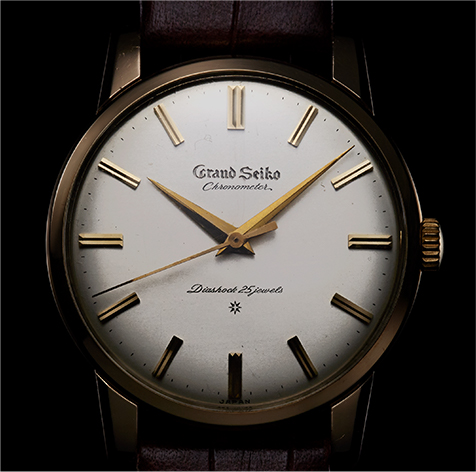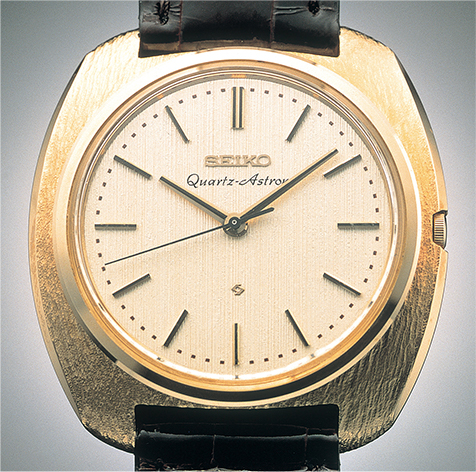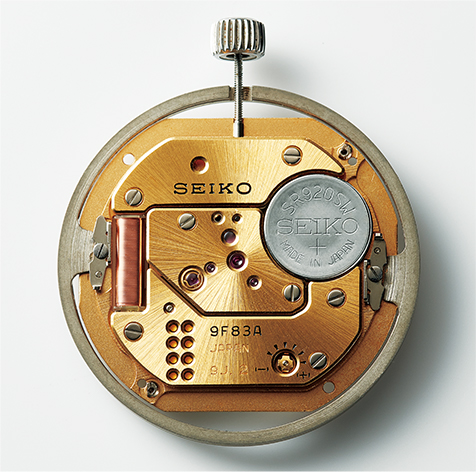Learn more about Calibre 9F

The birth of Grand Seiko
For several years, the company had been making steady progress in developing its own mechanical watchmaking so as to create highly precise timepieces that would stand comparison with the world’s best and these efforts came to fruition in the launch of the first Grand Seiko in 1960. The company's confidence in their achievement is plain to see in the name, Grand Seiko, that they bestowed on this watch. Furthermore, the word “Chronometer” was placed just below the name as evidence that the movement had passed rigorous tests of precision on a par with the highest chronometer standards of the time. The Grand Seiko lion emblem adorned the case back, just as it does on most Grand Seiko watches of today.

Why a quartz movement is so precise.
In the 1880’s, Pierre, Marie and Jacques Curie had discovered the piezoelectric effect, demonstrating that crystals like quartz vibrate when voltage is applied. It was a long way from this discovery to a quartz watch but, in 1969, thanks to breakthroughs made by the Seiko company in IC’s, in step motor design and in the shaping of quartz crystals, the Quartz Astron finally appeared. The integrated circuit converts the precise vibrations of the tuning fork shaped crystal into electric signals, which drive a stepping motor that moves the hands. The number of vibrations in the crystal is 32,768 per second, while the oscillation rate of even a highly precise mechanical movement is 8 to 10 per second, so a quartz watch is necessarily many times more precise than a mechanical one. Not long after the release of the Quartz Astron, the company opened the patents behind it to the world, with the result that nearly every quartz watch today uses the technology that Seiko invented.

What makes Calibre 9F the ultimate quartz movement?
Calibre 9F83, which was released in 1993, had a high precision rate of ±10 seconds a year, made possible by the careful selection and ageing of each quartz crystal and by the pairing of each crystal oscillator with an IC adjusted to accommodate its individual performance characteristics. The enhanced accuracy was indeed remarkable, but was just one of the movement's many advances. Thanks to a twin pulse control system invented for this watch, more torque is generated so the hands are heavier and longer, extending right to the edge of the dial. The high torque also drives an instantaneous date change mechanism which makes the date change in the blink of an eye. The second hand stops exactly on the markers and does so without any backlash or shudder, thanks to a spring-loaded device that comes from the world of mechanical watchmaking. The dust resistance of the movement is enhanced by the use of an enclosed cage within the movement so that, even when the watch is opened for maintenance or battery change, dust particles cannot penetrate. Most importantly of all, each 9F movement is assembled and adjusted by hand and each movement is decorated to the highest Grand Seiko standard.

